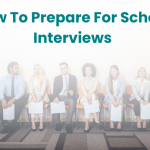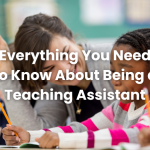6 weeks away from the classroom is a long time for students, particularly those of primary school age. For some students this extended period away from school causes feelings of anxiety and a reluctance to return to the classroom. After 6 glorious weeks of summer it can seem challenging to engage children back into school life. It is worth bearing in mind the new school year can be daunting for adults as well as children. For parents and carers, the change of classroom, teachers, teaching assistants and the curriculum content can be a worry. For teaching staff, they have the challenge of getting to know their new class properly alongside numerous other responsibilities, such as assessments and covering the curriculum. Therefore it is not surprising some children struggle with the prospect of returning to school after a summer of self-indulgence and the lack of uniformity that school provides.
Teaching staff inject a lot of effort and energy into ensuring topics taught are fun, engaging and age-appropriate (as well as meeting key curriculum objectives!). A massive amount of time and thought goes into how topics will be introduced and hook children in. But the very first week back in school can be unpredictable. Here are some tips for ensuring children are motivated and eager to learn.
Don’t expect too much
The first week back should be fun and engaging. Set short goals as opposed to big goals that require lots of investment of time. Begin topics via subjects such as Art, P.E and PSHE, e.g. circle time, to encourage discussion.
Allocate time for sharing
Not every child will want to discuss the summer holidays; it’s important to remember that some pupils will not have done a great deal over the holidays or simply don’t want to talk about it. It is important to give children time to share their experiences if they want to but in a controlled and non-pressured manner. For example, children could fill out a blank postcard with details of what they enjoyed during the summer holidays. Or you could ask structured questions such as, ‘Since you were last in the classroom, what have you learnt or achieved?’ (this could be anything from completing a book they were reading to learning to swim).
Introduce topics in an engaging way
The best way to introduce a new topic is in a fun way. This could be having a dress up day in the style of whichever topic you are studying or getting the children to work out what the topic is through a series of clues. For example, you could print pictures of artefacts from the historical era you are studying and get the class to work out what the artefacts are and when they are from. The first week back is an ideal time to do this.
Create classroom expectations with the pupils
Take the time to sit down with your class and ask them what they think the classroom rules should be. The idea is that the children come up with their own ideas of what their classroom behaviour should be like and they all sign a behaviour agreement which can be pinned up on the wall. You will be surprised by the sensible and fantastic suggestions children come up with. Introducing classroom expectations in this way involves the children and gives them autonomy over their learning space and their own behaviour.
Begin to create working wall displays together
Many schools now use working walls in the classroom as opposed to ready made displays. Working walls involve children in their learning and clearly show the progress from day one of a topic to the final day. Start adding to your working wall in small segments. For example, if you print out pictures of objects related to your topic, get the children to write down their thoughts and ideas onto post-it notes and stick them on the working wall. This will document their initial reactions and thoughts. To extend further, you could ask the children if they have any questions they would like to find out the answers to regarding the topic. Again, these questions could be stuck on the working wall with the intention of answering them as the topic progresses.
Have fun
Most importantly, have fun during the first week back. Don’t put yourself under too much pressure and enjoy getting to know your new class. The academic year is a blank book waiting to be written.
If you are seeking further inspiration for Back to School then read our blog ’5 Tips for Teachers to Prepare For Going Back to School’.




